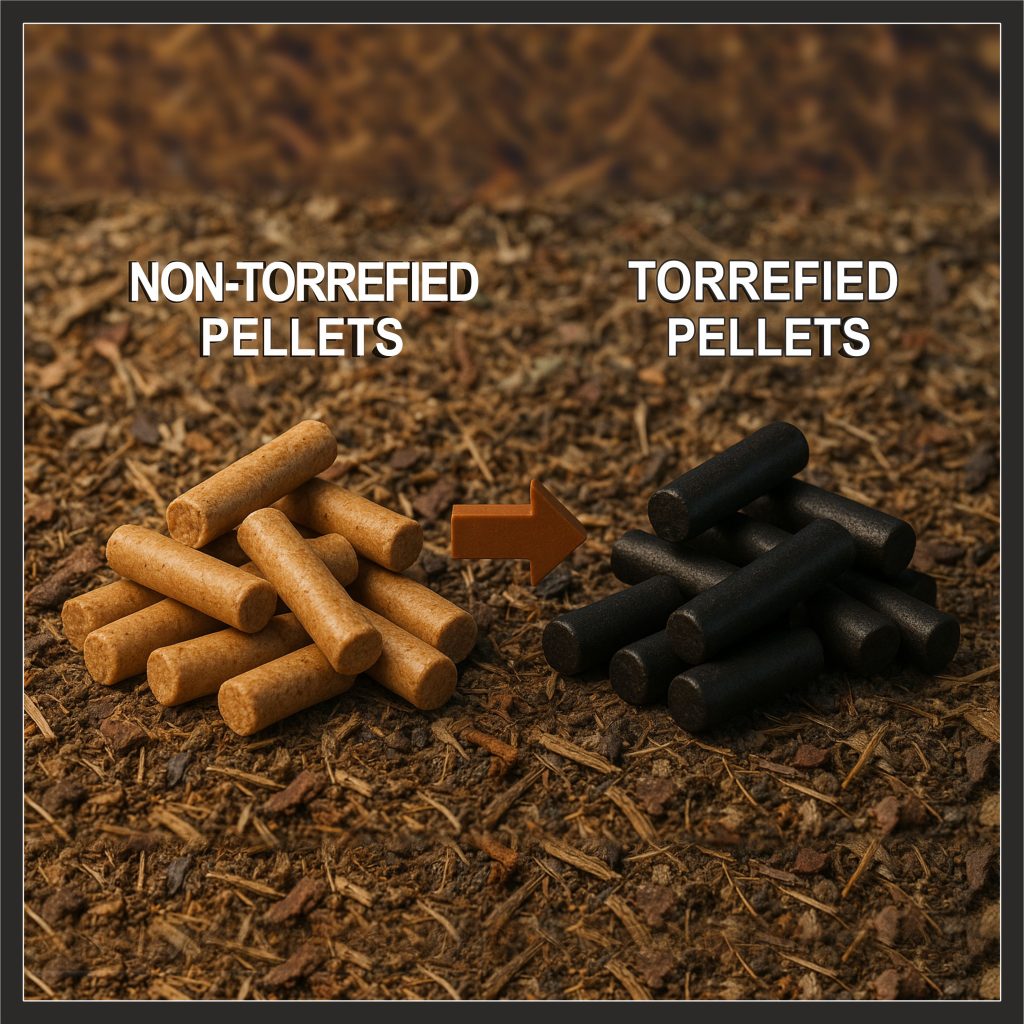

Qus. and Ans. of Non-Torrefied Pellets vs Torrefied Pellets :

Q1: What are Non-Torrefied Pellets?
✅ A: These are raw biomass pellets made from agricultural or forestry residues. They retain higher moisture and are less dense, commonly used in small-scale heating systems.
Q2: What are Torrefied Pellets?
✅ A: Torrefied pellets are biomass that has undergone thermal treatment (torrefaction) at 200–300°C in the absence of oxygen. The process removes moisture, increases energy density, and creates a coal-like solid fuel.
Q3: What’s the Colour and Texture Difference?
Q4: How Do They Compare in Energy Value?
Q5: Applications?
Q6: Sustainability & 3R Benefit (Reduce, Reuse, Recycle)?
✅ A: Torrefaction enhances biomass utility, reduces logistics cost, and provides a cleaner alternative to fossil fuels — fitting perfectly into circular economy & renewable energy goals.
❓Q7: How Does Torrefaction Improve Pellet Storage?
✅ A: Torrefied pellets are hydrophobic (repel water), meaning they absorb less moisture from the air. This makes them ideal for long-term storage and transport, even in humid environments.
❓Q8: Are Torrefied Pellets Environmentally Safer Than Coal?
✅ A: Yes. Though they resemble coal, torrefied pellets are carbon-neutral when sustainably sourced. They release CO₂ during combustion, but it’s offset by the CO₂ absorbed during biomass growth — unlike fossil-based coal.
❓Q9: What About Ash Content and Emissions?
❓Q10: What Are the Challenges of Torrefied Pellets?
✅ A:
❓Q11: Are Torrefied Pellets Suitable for All Boilers?
✅ A: Mostly yes, but retrofitting might be needed for older boilers. Modern systems and co-firing plants are already designed to handle high-energy torrefied fuel efficiently.
❓Q12: How Do They Fit Into India’s and Global Renewable Energy Goals?
✅ A:
✅ Conclusion: Why the Future is Torrefied
As the world transitions toward cleaner, more efficient energy sources, torrefied pellets stand out as a powerful solution. While non-torrefied pellets are valuable for small-scale, local use, torrefied pellets offer industrial-grade performance, improved logistics, and lower emissions — all while aligning with global sustainability goals.
At FABON Engineering, we believe in driving innovation through renewable energy and circular economy principles. Torrefied biomass is not just a fuel — it’s a sustainable shift toward a greener future.
WhatsApp us

Very good https://is.gd/tpjNyL